Equi-Potential Surface
Description:
To understand Equi-potential surface, take a charge ‘q’. For any direction at a distance ‘r’ from ‘q’, potential remains the same (as the distance is same). If we join all the points at same distance, the locus would be a sphere. The potential at every point on the surface of sphere will be same. So, the surface of the sphere will be called as an equipotential or equipotential surface
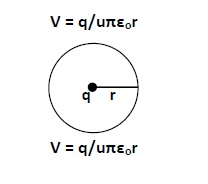
Potential at equipotential surface of sphere having radius ‘r’ −
V = 1q4πε0r
Equipotential surface is that imaginary surface on which, at every point the potential remains same.
Example
A spherical surface at the centre of which a charge is placed.
Note
- At a time, large number of equipotential surface can exist.
- At distance tends to infinity, these equipotential surface becomes parallel without curve.
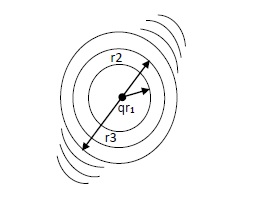
Characteristics of equipotential
1. Equipotential and electric field are at right angle to each other.
The direction of electric field is always radially outward from the charge q and the direction of equipotential is normal to it. As shown in figure.
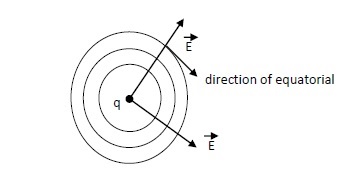
2. Direction of electric field is from high potential to low potential.
From figure, the potential (V1) at point A is stronger than (v2) at point B because distance r1 is smaller than r2 and we know that potential is inversely proportional to distance.
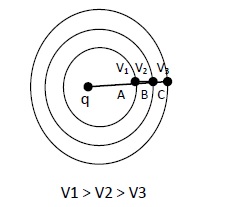
3. The net work done on a charge for carrying it between any two point of an equipotential surface is zero.
By work Energy theorem we know that, difference of energy at two points gives work done. So, work done in moving a charge ‘q’ from point A to B (both points on the same equipotential) through the path shown in figure, will be calculated using work Energy theorem.
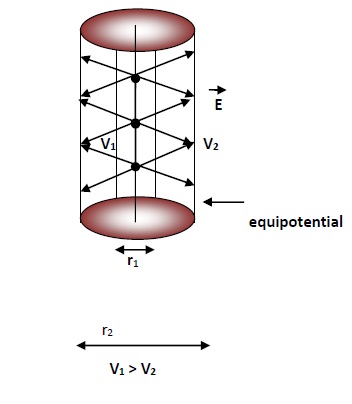
Potential energy of charge at A(U1) = qV1
Potential energy of charge at B(U2) = qV2
But V1 = V2 = V. As both the points are on the same equipotential
Work done = change in potential energy = U2- U1
⇒ U2 - U1 = qV - qV = 0
So, work done to move a charge ‘q’ on same equipotential is always zero.

